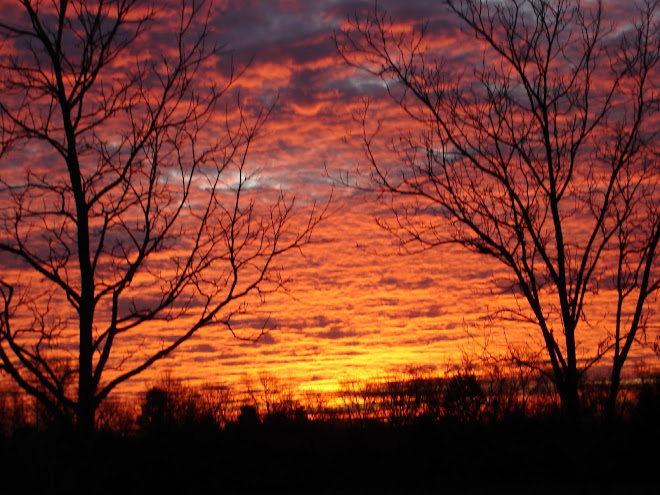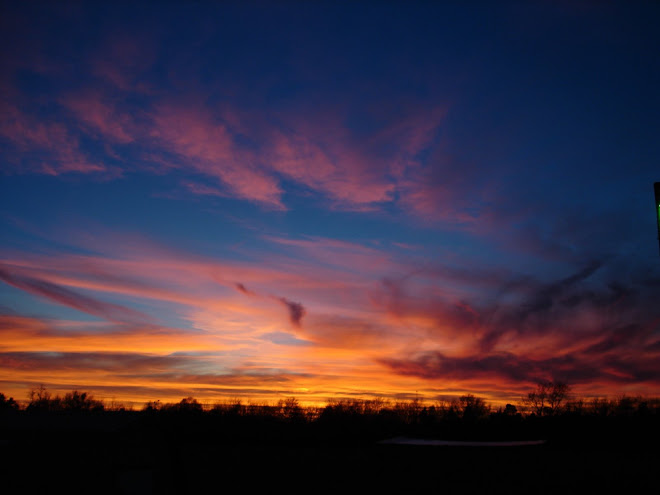

History: Cooper Lake State Park, 3,026 acres, is situated in northeast Texas. The park consists of two units, Doctors Creek Unit, 715.5 acres, located in Delta County, and South Sulphur Unit, 2,310.5 acres, located in northern Hopkins County. Cooper Lake, 19,300 acres, is a young lake; embankment construction on the South Sulphur River began in 1986. Lake construction was completed in the fall of 1991 and impoundment began on September 28, 1991. The park property was acquired in January 1991 and opened for boat access in November 1992. Doctors Creek Unit opened January 3, 1996; South Sulphur Unit opened April 27, 1996. Both park units are leased from the U.S. Army Corps of Engineers for 25 years.
The rolling hills of Cooper Lake State Park offer spectacular views of Cooper Lake, from the steeper hills of South Sulphur Unit to the more gradual slopes of the Doctor's Creek Unit. The park is centrally located to surrounding communities, including Paris, Cooper, Greenville, Sulphur Springs and Commerce as well as the urban centers of the Dallas-Fort Worth metroplex and Texarkana
Situated in northeastern Texas, Cooper Lake State Park is located in Delta and Hopkins Counties. Cooper Lake State Park occupies land owned by the U.S. Army Corps of Engineers and is operated through a lease agreement. The park property was acquired in January 1991 and both parks opened in 1996. Located on land that is now beneath the waters of Cooper Lake are the traces of ancient people such as the Caddo Indians who came there thousands of years ago as well as those of more recent settlers and farmers who lived there in the 1800,s. Immigrants from Tennessee, Kentucky, the Carolinas and Virginia altered the landscape by introducing agriculture and livestock. By the 19th century, the area became known for its cotton and dairy production. Today a wide range of land and water based recreational opportunities have been established to provide resource-oriented outdoor experiences which are compatible with natural resource preservation.
Lake History: Situated in northeast Texas, The Cooper Lake Project was authorized in 1955 with embankment construction beginning in 1986. Located within the South Sulphur River watershed, the U.S. Army Corps of Engineers built the lake to help control flooding on the South Sulphur River, to serve as a water supply for towns in the area and to provide recreational opportunities such as fishing and boating. The lake covers about 19,000 acres and is surrounded by thousands of acres devoted to parks and wildlife management. The lake has evolved into one of the best all around fishing lakes in the region growing in popularity among weekend anglers and Pro Guides alike. Species likely to be caught are Blue and Channel Catfish, Blue Gill, Florida Largemouth Bass, Crappie and Hybrid Striped Bass.Activities: Features include camping, fishing, water skiing, picnicking, boating, unsupervised swimming, bird watching, nature study, fun and educational nature programs and tours.
The rolling hills of Cooper Lake State Park offer spectacular views of Cooper Lake, from the steeper hills of South Sulphur Unit to the more gradual slopes of the Doctor's Creek Unit. The park is centrally located to surrounding communities, including Paris, Cooper, Greenville, Sulphur Springs and Commerce as well as the urban centers of the Dallas-Fort Worth metroplex and Texarkana
Situated in northeastern Texas, Cooper Lake State Park is located in Delta and Hopkins Counties. Cooper Lake State Park occupies land owned by the U.S. Army Corps of Engineers and is operated through a lease agreement. The park property was acquired in January 1991 and both parks opened in 1996. Located on land that is now beneath the waters of Cooper Lake are the traces of ancient people such as the Caddo Indians who came there thousands of years ago as well as those of more recent settlers and farmers who lived there in the 1800,s. Immigrants from Tennessee, Kentucky, the Carolinas and Virginia altered the landscape by introducing agriculture and livestock. By the 19th century, the area became known for its cotton and dairy production. Today a wide range of land and water based recreational opportunities have been established to provide resource-oriented outdoor experiences which are compatible with natural resource preservation.
Lake History: Situated in northeast Texas, The Cooper Lake Project was authorized in 1955 with embankment construction beginning in 1986. Located within the South Sulphur River watershed, the U.S. Army Corps of Engineers built the lake to help control flooding on the South Sulphur River, to serve as a water supply for towns in the area and to provide recreational opportunities such as fishing and boating. The lake covers about 19,000 acres and is surrounded by thousands of acres devoted to parks and wildlife management. The lake has evolved into one of the best all around fishing lakes in the region growing in popularity among weekend anglers and Pro Guides alike. Species likely to be caught are Blue and Channel Catfish, Blue Gill, Florida Largemouth Bass, Crappie and Hybrid Striped Bass.Activities: Features include camping, fishing, water skiing, picnicking, boating, unsupervised swimming, bird watching, nature study, fun and educational nature programs and tours.
Facilities:
Doctors Creek: Located on the northeast side of Cooper Lake, this cozy unit offers a variety of outdoor opportunities. Facilities consist of restrooms, 6.2 miles of shoreline, a beautiful sandy beach and a 1 mile nature trail with one of 2 playgrounds nearby. There is an ADA approved 3-lane boat ramp, a fish cleaning table, a sand volleyball court and an outdoor amphitheater. To facilitate groups a picnic pavilion (capacity 50) is available for rent. A 2-3 mile hike/bike trail is currently under construction at the park. Note: An entrance fee is charged in order to use the Tira boat ramp.
Doctors Creek: Located on the northeast side of Cooper Lake, this cozy unit offers a variety of outdoor opportunities. Facilities consist of restrooms, 6.2 miles of shoreline, a beautiful sandy beach and a 1 mile nature trail with one of 2 playgrounds nearby. There is an ADA approved 3-lane boat ramp, a fish cleaning table, a sand volleyball court and an outdoor amphitheater. To facilitate groups a picnic pavilion (capacity 50) is available for rent. A 2-3 mile hike/bike trail is currently under construction at the park. Note: An entrance fee is charged in order to use the Tira boat ramp.
South Sulphur: Located on the south side of Cooper Lake, this sprawling 2,560 acre unit offers a multitude of camping and recreational opportunities. Facilities include 14 fully furnished lakeside cabins, 4 premium screened shelters with air condition, beds (no linens) microwave and fridge, 17 screened shelters, 87 water/electric sites, 15 electric equestrian sites, 15 walk-in tent camping sites, two lighted fishing piers, two boat ramps, three picnic areas, a group pavilion (capacity 100), 7 shower/restroom facilities, a playground, a 5 mile hike/bike trail, a 10.5 mile equestrian trail, an outdoor amphitheater, a sand volleyball court, and a large sandy swimming beach. All RV and trailer sites have a minimum 55 foot concrete
Fishing Regulations
Special regulations govern the harvest of largemouth bass at Cooper Lake. There is a minimum length limit of 18 inches and a daily bag limit of 5 fish. All other game fish are managed under statewide regulations.
Angling Opportunities
Largemouth bass are the most popular sportfish in the reservoir. White bass and hybrid striped bass also provide excellent fisheries especially in the lake's open water areas. Because hybrid striped bass do not reproduce, they are stocked annually by TPWD to maintain the fishery. Crappie fishing is generally good, especially in the lake's abundant standing timber and brush piles. Though channel, blue, and flathead catfish are all present, channel catfish are most abundant and provide an excellent sport fishery.
Fishing Cover/Structure
Flooded timber is found in most of the creeks, along the shoreline and in the upper half of Cooper Lake. Access to the west half of the lake is through boat lanes, sedimentation lines and openings in the timber. The main river channel is a popular area for spring fishing. Numerous small islands and fencerows also provide structure for largemouth bass anglers. Aquatic vegetation is sparse, but there are areas of floating aquatics (lotus, water primrose), and native emergents (cattails, smartweed). The only shore development is at the state park units. There are no other boat docks or boat houses.
Tips & Tactics
Largemouth bass anglers are most successful on this reservoir during the spring, fall, and winter months. Topwater baits such as buzzbaits, Zara Spooks, and Pop-R's are popular in the early morning and evening hours. Crankbaits and spinnerbaits are also productive fished along main-lake points and flooded timber. Popular soft plastic baits include worms, tubes, grubs, and soft-jerkbaits. In summer and early fall, schooling white bass and hybrid striped bass concentrate around main-lake points and humps. Topwater baits, jigging spoons, grubs, and lipless crankbaits are all popular. Techniques for hybrid stripers include trolling with in-line spinners and crankbaits and vertically jigging bucktail jigs. Live bait presentations for both hybrid striped and white bass are popular at all times of the year.
The catfish population is dominated by channel catfish, although anglers can also catch blue and flathead catfish. Stinkbait and cut bait work well for channel and blue catfish, while live bait is preferred for flathead cats. Crappie are commonly sought in Cooper Reservoir's abundant standing timber and brush piles. Live minnows and crappie jigs are among the most popular baits used. Bank anglers are often successful fishing for crappie on the "wall" at the Heron Harbor Day Use Area in the South Sulphur Unit of Cooper Lake State Park. The Cooper Dam tailrace area also provides good bank access for a variety of sport fish.
Special regulations govern the harvest of largemouth bass at Cooper Lake. There is a minimum length limit of 18 inches and a daily bag limit of 5 fish. All other game fish are managed under statewide regulations.
Angling Opportunities
Largemouth bass are the most popular sportfish in the reservoir. White bass and hybrid striped bass also provide excellent fisheries especially in the lake's open water areas. Because hybrid striped bass do not reproduce, they are stocked annually by TPWD to maintain the fishery. Crappie fishing is generally good, especially in the lake's abundant standing timber and brush piles. Though channel, blue, and flathead catfish are all present, channel catfish are most abundant and provide an excellent sport fishery.
Fishing Cover/Structure
Flooded timber is found in most of the creeks, along the shoreline and in the upper half of Cooper Lake. Access to the west half of the lake is through boat lanes, sedimentation lines and openings in the timber. The main river channel is a popular area for spring fishing. Numerous small islands and fencerows also provide structure for largemouth bass anglers. Aquatic vegetation is sparse, but there are areas of floating aquatics (lotus, water primrose), and native emergents (cattails, smartweed). The only shore development is at the state park units. There are no other boat docks or boat houses.
Tips & Tactics
Largemouth bass anglers are most successful on this reservoir during the spring, fall, and winter months. Topwater baits such as buzzbaits, Zara Spooks, and Pop-R's are popular in the early morning and evening hours. Crankbaits and spinnerbaits are also productive fished along main-lake points and flooded timber. Popular soft plastic baits include worms, tubes, grubs, and soft-jerkbaits. In summer and early fall, schooling white bass and hybrid striped bass concentrate around main-lake points and humps. Topwater baits, jigging spoons, grubs, and lipless crankbaits are all popular. Techniques for hybrid stripers include trolling with in-line spinners and crankbaits and vertically jigging bucktail jigs. Live bait presentations for both hybrid striped and white bass are popular at all times of the year.
The catfish population is dominated by channel catfish, although anglers can also catch blue and flathead catfish. Stinkbait and cut bait work well for channel and blue catfish, while live bait is preferred for flathead cats. Crappie are commonly sought in Cooper Reservoir's abundant standing timber and brush piles. Live minnows and crappie jigs are among the most popular baits used. Bank anglers are often successful fishing for crappie on the "wall" at the Heron Harbor Day Use Area in the South Sulphur Unit of Cooper Lake State Park. The Cooper Dam tailrace area also provides good bank access for a variety of sport fish.





%5B1%5D.jpg)








No comments:
Post a Comment